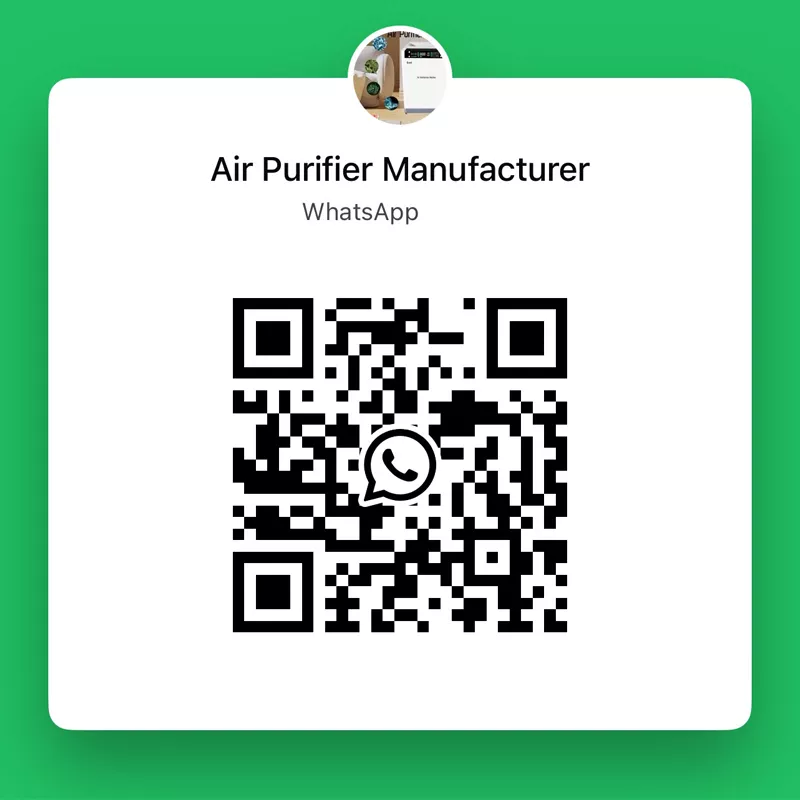In households with pets, air purifiers have become an essential appliance. Especially for cat owners, pet hair and odors are particularly prominent issues. How to choose a suitable pet air purifier? This article will provide a detailed buying guide from five aspects: hair removal capability, odor removal capability, sterilization capability, safety design, and overall usage costs.

1. Hair Removal Capability: Core Indicator
The hair removal capability of a pet air purifier is one of its core functions. To evaluate the hair removal effectiveness of an air purifier, it can mainly be assessed from two aspects: air intake system design and pre-filter.
Air Intake System Design
The design of the air intake system directly affects the hair removal performance of the air purifier. First, the size and position of the air intake are key. Currently, air purifiers on the market feature various intake methods, including side, bottom, and top designs, with different shapes. However, for aesthetic reasons, many products have relatively small air intakes, which may impact their ability to capture floating hair.
Due to its light weight, pet hair tends to float in the air, usually within a height range of 10-20 centimeters. If the air intake of the purifier is designed too high, its ability to capture floating hair at higher levels will be compromised, and a small intake can easily become clogged. Therefore, air purifiers designed for pet hair often adopt multi-sided side intake, bottom intake, or tower-style surround intake designs, with larger intake areas positioned closer to the common floating zones of pet hair, thereby improving purification efficiency.
It is recommended to choose an air purifier with the following features:
-
Large air intake
-
Multiple intake surfaces
-
Side intake (intake positioned about 10-20 centimeters above the ground)
Such designs can more effectively capture floating hair in the air and enhance purification speed.
Pre-Filter
The material of the pre-filter is also an important factor affecting hair removal performance. Ordinary air purifiers typically use cotton filters, which can capture hair but lose their effectiveness over time. In contrast, air purifiers designed specifically for pets use electrostatically charged pre-filters that can more firmly capture hair of various sizes and are easy to remove and clean.
2. Odor Removal Capability: Key Indicator
Pet odors are another major issue for cat owners. To evaluate the odor removal capability of an air purifier, it can be assessed from two aspects: targeted purification technology and gaseous CADR value.
Targeted Purification Technology
When selecting an air purifier, it is best to choose products equipped with technologies specifically designed to neutralize odor components, such as photocatalysis and bio-enzyme systems. These technologies can effectively break down odor-causing substances like ammonia, hydrogen sulfide, and methyl mercaptan, converting them into water and nitrogen, thereby improving air quality.
Gaseous CADR Value
The CADR value is an important parameter for measuring the purification efficiency of an air purifier, especially the gaseous CADR value, which directly reflects its ability to remove odors. A higher gaseous CADR value indicates better purification performance. For example, a gaseous CADR value of 500㎡/h is more effective than 300㎡/h. However, the choice should also consider room size. Generally, for rooms larger than 100 square meters, an air purifier with a CADR value ≥500㎡/h is recommended, while a 300㎡/h purifier is sufficient for spaces around 50 square meters.
3. Sterilization Capability: Health Assurance
The sterilization capability of an air purifier is crucial for maintaining family health. To evaluate sterilization effectiveness, focus on HEPA filter grade and sterilization technology.
HEPA Filter Grade
HEPA filters are the core component of high-efficiency air filters, capable of capturing airborne particles such as pollen, dust mites, bacteria, and viruses. It is recommended to choose a HEPA filter of grade H12 or higher, as it offers higher filtration efficiency and can effectively reduce the amount of bacteria in the air. Common HEPA filter grades and their filtration rates are as follows:
-
H11 grade: Filtration rate >98%
-
H12 grade: Filtration rate >99.9%
-
H13 grade: Filtration rate >99.97%
We have produced a pet-specific air filter with a HEPA filter grade of 14 for this purpose.
Sterilization Technology
Currently, air purifiers on the market mainly use two sterilization technologies: UV ultraviolet light and plasma. UV ultraviolet light achieves sterilization by destroying the DNA structure of bacteria and viruses, while plasma actively eliminates bacteria and viruses through oxidation and reduction reactions. It is recommended to choose products equipped with both technologies to ensure comprehensive sterilization.
4. Safety Design: Pet-Friendly
For cat owners, the safety of the air purifier is equally important. It can be evaluated from three aspects: noise level, electric shock prevention, and collision resistance.
Cats have highly sensitive hearing and can be easily disturbed by noise, so choosing an air purifier with low noise operation is particularly important. Additionally, cats are naturally active and may engage in "zoomies" around the house, so the air purifier should have a collision-resistant design to prevent tipping or damage. At the same time, electric shock prevention is essential to ensure the safety of pets during use.
5. Overall Usage Costs: Economic Considerations
In addition to performance and safety, the overall usage costs of an air purifier are also a key factor to consider when making a purchase. These mainly include machine depreciation costs, filter replacement costs, and electricity costs.
The pre-filter usually only requires cleaning and does not need frequent replacement, while the HEPA filter needs to be replaced regularly. Therefore, when purchasing, pay attention to the lifespan and replacement costs of the filters. Additionally, the power consumption of the air purifier will affect long-term usage costs, so it is recommended to choose products with higher energy efficiency.

